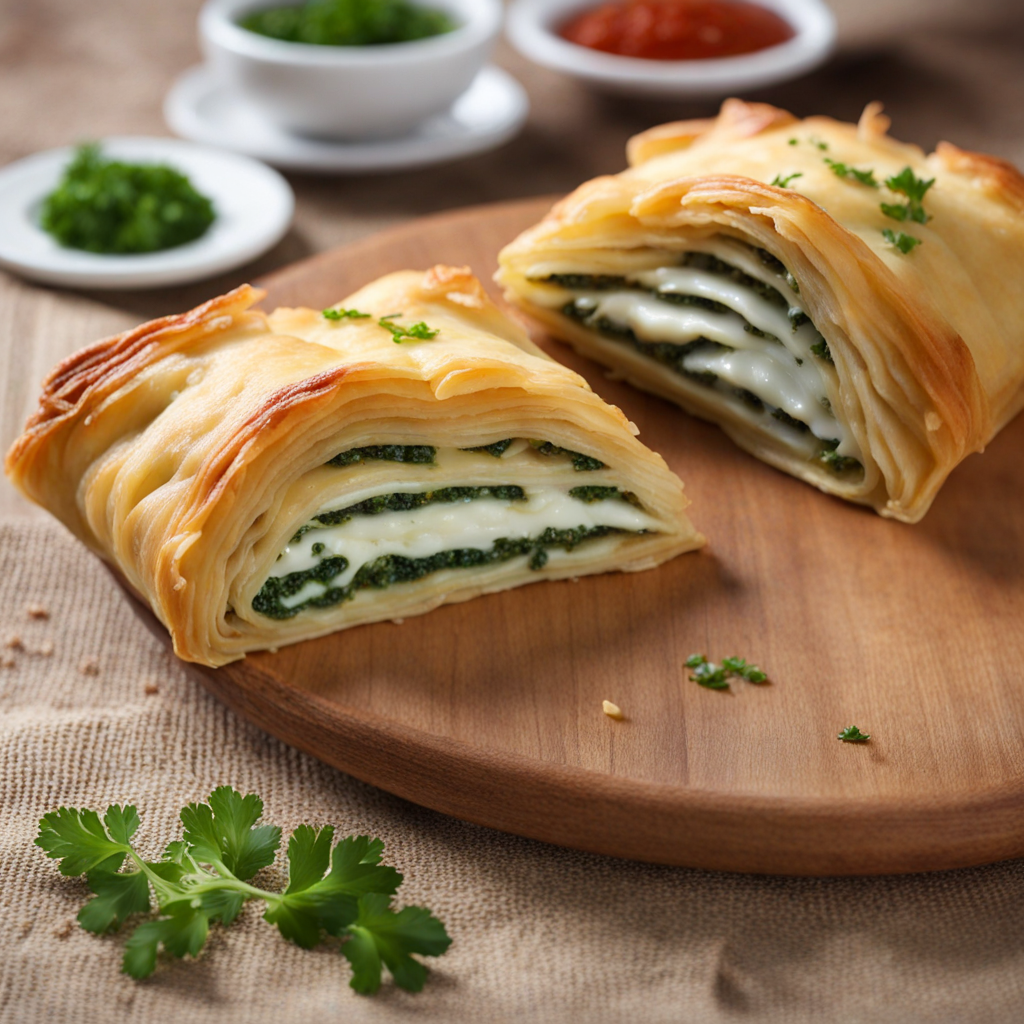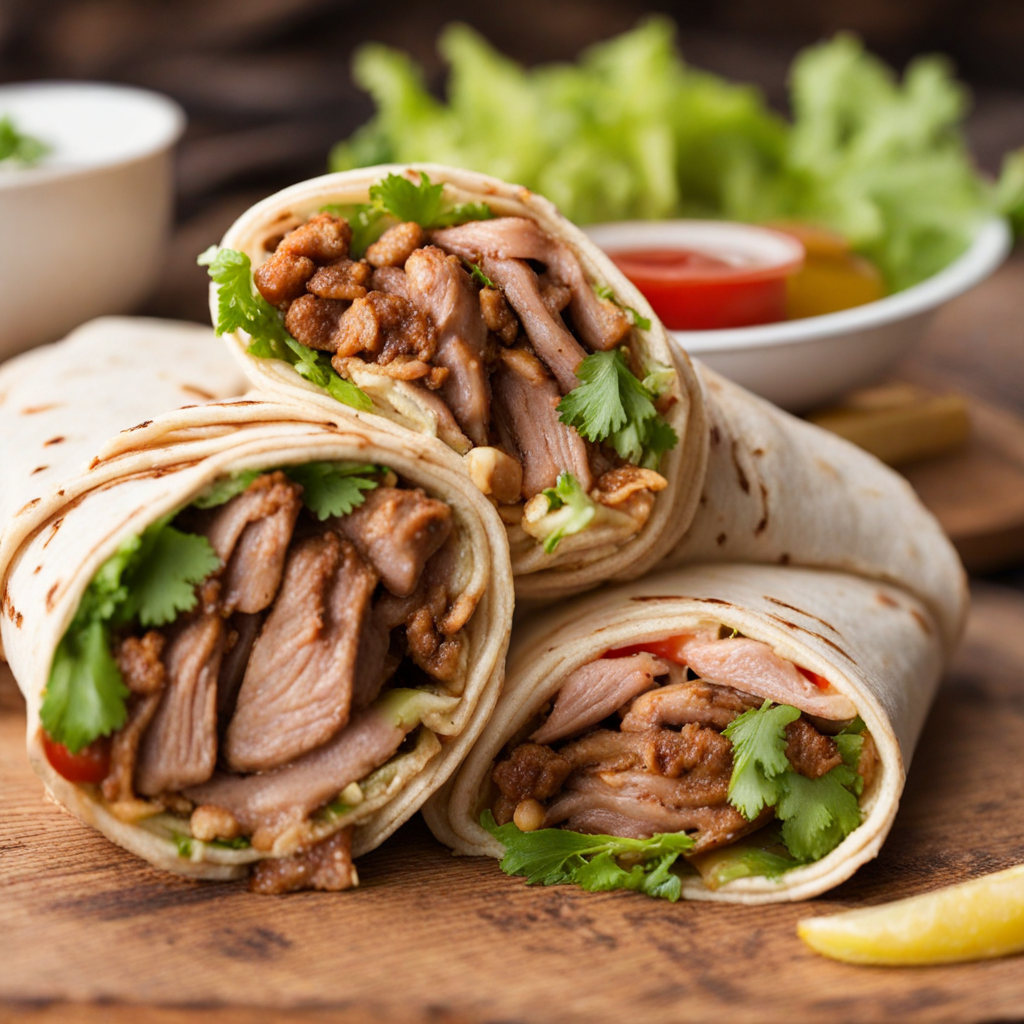Halebi
Halebi is a delightful Syrian dish that captures the essence of Middle Eastern cuisine through its rich flavors and comforting textures. Originating from the city of Aleppo, Halebi is traditionally made with a fragrant mixture of minced meat, typically lamb or beef, blended with aromatic spices such as cinnamon, allspice, and nutmeg. This savory filling is enveloped in a thin layer of dough, which is then shaped into small, round dumplings and often pan-fried or boiled to perfection. The result is a succulent bite that is both tender and bursting with flavor, making it a popular choice among food enthusiasts looking to explore authentic Syrian dishes. What sets Halebi apart is its unique combination of spices and the way they harmonize with the natural richness of the meat. Each bite transports you to the bustling streets of Aleppo, where the aroma of spices wafts through the air, enticing you to savor every morsel. Often served with a drizzle of garlic yogurt or a side of tangy pickles, Halebi offers a delightful contrast of flavors that elevates the dining experience. The creamy yogurt complements the savory meat filling, while the pickles add a refreshing crunch, making it a well-rounded culinary delight. As you indulge in Halebi, you’ll not only appreciate its incredible taste but also its cultural significance. This dish is often prepared during special occasions and family gatherings, symbolizing warmth, togetherness, and the rich culinary heritage of Syria. The process of making Halebi can be a communal activity, where family members come together to create these delicious dumplings, reinforcing bonds and sharing stories over the preparation. Whether enjoyed at a local Syrian restaurant or made at home, Halebi is a must-try dish that invites you to discover the flavors of Syria in a truly unforgettable way.
How It Became This Dish
The Culinary Heritage of Aleppo: A Journey Through History #### Origins and Geography Aleppo, known as Halab in Arabic, is one of the oldest continuously inhabited cities in the world, with a rich history that dates back over 8,000 years. Its strategic location along the Silk Road made it a melting pot of cultures, ideas, and, notably, culinary traditions. The region's fertile plains, combined with its access to trade routes, allowed for a diverse array of agricultural products, which became the foundation of Aleppo’s gastronomic identity. The food of Aleppo is characterized by its use of fresh, local ingredients, such as grains, vegetables, fruits, and meats. The city’s climate is conducive to growing a variety of herbs and spices, which play a significant role in its culinary arts. Aleppo is particularly famous for its Aleppo pepper, a staple spice known for its moderate heat and fruity undertones, which is a testament to the region’s agricultural bounty. #### Cultural Significance The culinary traditions of Aleppo are deeply intertwined with its cultural and historical context. The city has been influenced by various civilizations, including the Greeks, Romans, Byzantines, and Ottomans, each leaving a mark on its cuisine. The legacy of these cultures can be seen in the diverse array of dishes that reflect both local and foreign influences. Food in Aleppo is not merely sustenance; it is a means of social connection, cultural expression, and celebration. Meals are often communal experiences, bringing families and friends together. The city is renowned for its hospitality, with dishes prepared to honor guests. Traditional gatherings often revolve around food, showcasing a range of dishes from savory kebabs and stews to sweet pastries and desserts. #### Signature Dishes Aleppo's culinary scene is celebrated for its vibrant flavors and distinctive dishes. One of the most iconic is Kebabs, particularly Kebab Hindi, which features marinated meat grilled over open flames, often served with tangy sauces and fresh vegetables. Another beloved dish is Fatteh, a layered dish made with crispy bread, chickpeas, yogurt, and spiced meats, which highlights the region's love for combining textures and flavors. Muhammara, a spicy dip made from roasted red peppers, walnuts, and olive oil, showcases the use of local ingredients and is often served with bread. Mansaf, a traditional dish of lamb and rice, reflects the Bedouin influence on Aleppo’s food culture and is often served during festive occasions. Desserts are equally significant in Aleppo's culinary repertoire. Baklava, with its layers of phyllo pastry, nuts, and syrup, is a staple sweet. However, the city is particularly known for its Knafeh, a rich pastry made with thin noodle-like dough soaked in syrup and layered with cheese or clotted cream, often enjoyed during celebrations. #### Historical Development The history of Aleppo's cuisine is a tapestry woven from the threads of conquest, trade, and migration. During the Roman and Byzantine periods, Aleppo was a vital commercial hub, and the influx of goods and ideas from different regions contributed to the evolution of its culinary practices. Spices from the East, grains from the West, and cooking techniques from various cultures melded to create a unique culinary landscape. The Islamic Golden Age further enriched Aleppo’s food culture. The advent of the Umayyad Caliphate in the 7th century saw the city flourish, and it became a center for learning and culture, including culinary arts. Scholars and chefs traveled across the empire, sharing their knowledge and recipes. The famous 10th-century cookbook "Kitab al-Tabikh" by Ibn Sayyar al-Warraq provides insights into the early culinary practices of the region, many of which have persisted over the centuries. The Ottoman Empire's rule over Aleppo from the 16th century until the early 20th century introduced additional layers to the city’s culinary traditions. The Ottomans brought with them a wealth of ingredients, cooking techniques, and dishes, many of which were adapted to local tastes. During this period, Aleppo became known for its sophisticated dining culture, with elaborate meals served at banquets and significant events. #### Modern Influences and Global Reach The 20th century brought a wave of change to Aleppo’s food scene, influenced by globalization and migration. As Syrians emigrated around the world, they carried their culinary traditions with them, introducing dishes to new audiences and adapting them to local ingredients. Aleppo’s cuisine, particularly its famous kebabs and pastries, has gained popularity in many countries, contributing to a broader appreciation of Middle Eastern food. However, the ongoing conflict in Syria has posed significant challenges to Aleppo's culinary heritage. The war has led to the destruction of many historic sites, including traditional markets and restaurants. Many chefs and families have been displaced, and the culinary skills and knowledge passed down through generations are at risk of being lost. Yet, despite these challenges, there are concerted efforts to preserve Aleppo’s culinary traditions. Chefs and food enthusiasts are documenting recipes, hosting culinary events, and sharing the rich history of Aleppo's food culture to ensure that it remains alive for future generations. #### The Resilience of Aleppo's Cuisine The story of Aleppo’s cuisine is one of resilience and adaptation. Even in the face of adversity, the spirit of Aleppo lives on through its food. The flavors of the city—rich, complex, and deeply rooted in tradition—continue to inspire chefs and home cooks worldwide. As people seek comfort in food, Aleppo's culinary heritage serves as a reminder of the city's vibrant past and the enduring connections that food creates. In conclusion, the culinary history of Aleppo is a reflection of its diverse cultural influences, historical significance, and the resilience of its people. As Aleppo stands at the crossroads of tradition and modernity, its food remains a vital link to its identity, inviting us to savor the flavors of a city that has weathered the tests of time. Through its dishes, Aleppo tells a story of community, hospitality, and an unyielding love for food that transcends borders and generations.
You may like
Discover local flavors from Syria







